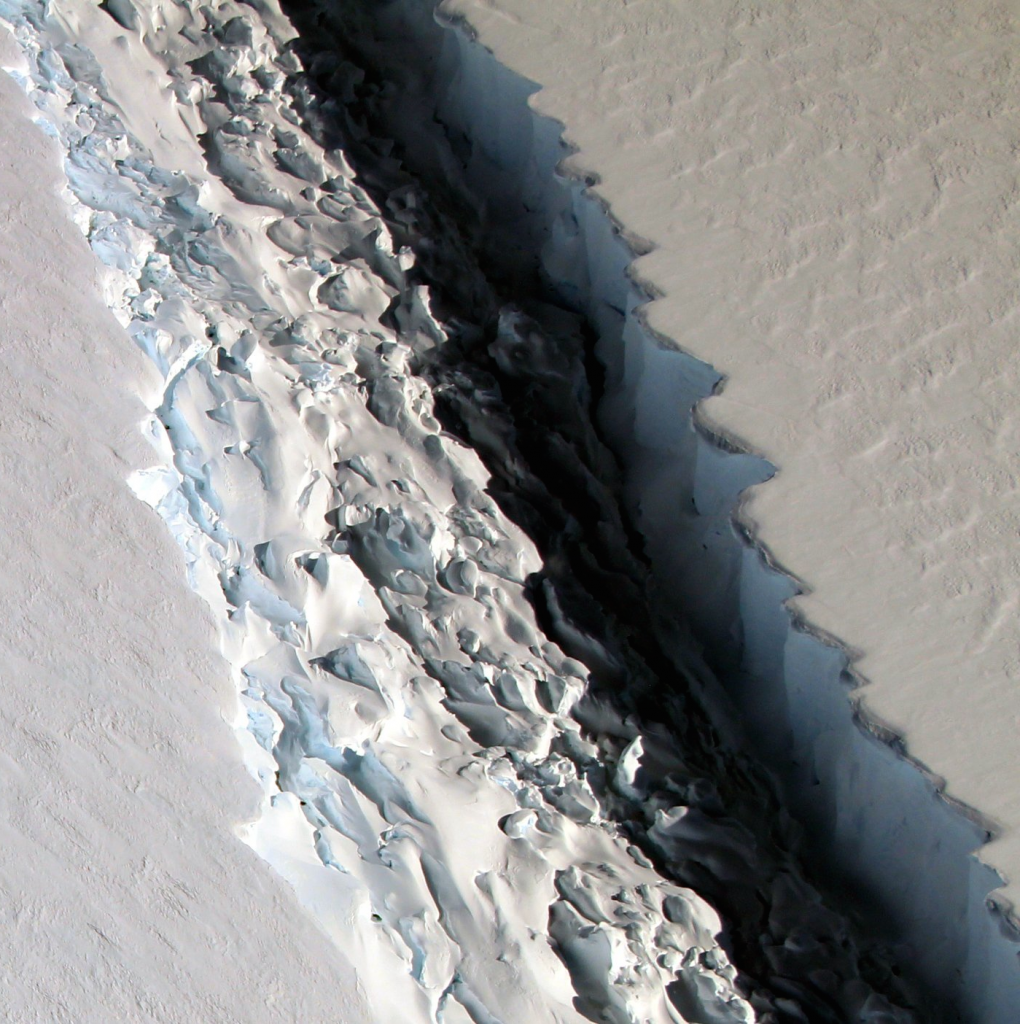Larsen C Ice Shelf, Antarctic
https://goo.gl/maps/TLsR9UKMiuM2
.

.
On Nov. 10, 2016, scientists on NASA’s IceBridge mission photographed an oblique view of a massive rift in the Antarctic Peninsula’s Larsen C ice shelf. Icebridge, an airborne survey of polar ice, completed an eighth consecutive Antarctic deployment on Nov. 18.
.
Ice shelves are the floating parts of ice streams and glaciers, and they buttress the grounded ice behind them; when ice shelves collapse, the ice behind accelerates toward the ocean, where it then adds to sea level rise. Larsen C neighbors a smaller ice shelf that disintegrated in 2002 after developing a rift similar to the one now growing in Larsen C.
.
The IceBridge scientists measured the Larsen C fracture to be about 70 miles long, more than 300 feet wide and about a third of a mile deep. The crack completely cuts through the ice shelf but it does not go all the way across it – once it does, it will produce an iceberg roughly the size of the state of Delaware (and for our followers in Ireland, this is a little bigger than the size of Co Kerry).
.
The mission of Operation IceBridge is to collect data on changing polar land and sea ice and maintain continuity of measurements between NASA’s Ice, Cloud and Land Elevation Satellite (ICESat) missions. The original ICESat mission ended in 2009, and its successor, ICESat-2, is scheduled for launch in 2018. Operation IceBridge, which began in 2009, is currently funded until 2019. The planned overlap with ICESat-2 will help scientists validate the satellite’s measurements.
.
Ref: nasa.gov
Image Credit: NASA/John Sonntag
.
#earthimages #earthimage #upintheair #abovetheclouds #satelliteimage #satelliteimages #EarthOverhead #overview #overvieweffect #nasa #Antarctic #LarsenC #icebridge



